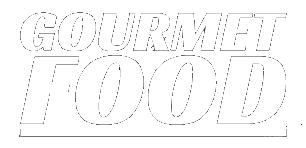
There are two types of people in this world: People who like to work out in the morning and people who don’t.
If you’re a member of Team Dawn Patrol, then you’ve probably chatted with a friend about fasted cardio. Simply put, this involves getting your heart rate up without eating anything prior. While most people do this type of activity in the morning, the fasted state can be achieved later on in the day as well.
THE BASICS OF FASTING
“A true fasted state starts at about 8–12 hours after your last meal,” says registered dietitian Allison Childress, PhD, a certified specialist in sports dietetics and assistant professor at Texas Tech University. “However, achieving a ‘fasted state’ can happen if it’s been 3–6 hours since your last meal. Most people who do fasted cardio do so in the morning before eating to ensure their body is in a completely fasted state.”
For some, doing fasted cardio happens in the early hours of the day, simply because they don’t have time to eat breakfast pre-sweat. According to science, there can be some benefits of getting after it sans fuel. People can burn up to 20% more body fat by exercising in the morning on an empty stomach, according to one study published in the British Journal of Nutrition. Another University of Scranton study revealed it may lead to reduced calorie consumption in the 24 hours that follow the fasted workout.
“The idea is that exercising in a fasted state burns stored energy (fat and glycogen) versus energy you have just consumed,” says Childress, who notes that this strategy works differently for everyone. While you may see your BFF lose fat from fasted cardio, you may not see any fat loss yourself.
FASTED CARDIO CAVEATS
Before you go running around without anything in the tank, there are a few things to keep in mind says Lindsey Clayton, a Barry’s Bootcamp instructor and co-founder of the Brave Body Project.
“Doing fasted cardio is safe, but if you’re going to do it you should keep the intensity of the exercise low,” she says. “Think jogging instead of a hard run or sprint.” Clayton cautions that if you find yourself light-headed, tire easily or feel as if you’re not working at the level you want to be — then exercising post meal or snack may be better-suited for you. In one Loughborough University study, runners who tackled a 60-minute treadmill session without eating first were more hungry than those who ate ahead of exercise
Ultimately, it’s all about your goals.
“Fasting cardio not only burns stored fat and carbs but can also burn stored protein in the form of lean muscle,” says Childress. “For most exercisers this is not desirable. Sipping on a BCAA (branched chain amino acid) drink during fasting cardio can alleviate some of this breakdown. Look for a supplement with at last 5g of BCAAs.”
THE BOTTOM LINE
As with any workout, make sure you’re placing importance on what you eat once you’re done. Fasting primes your body to take in nutrients once the effort is over, which means you should look for protein and carbohydrates to help refuel your muscles. The International Society of Sports Medicine recommends consuming .14–.23 grams of protein per pound of bodyweight very soon after a workout (that’s 20 grams of protein for a 140-pound woman).
The good news: There’s room to experiment. Feel out the right approach for you, whether or not fasting is part of the equation.



